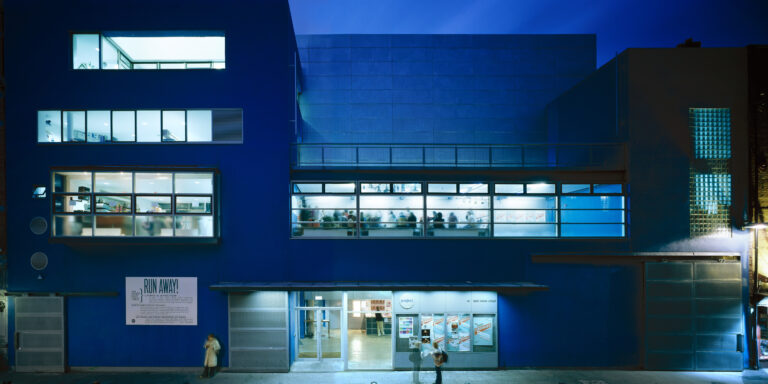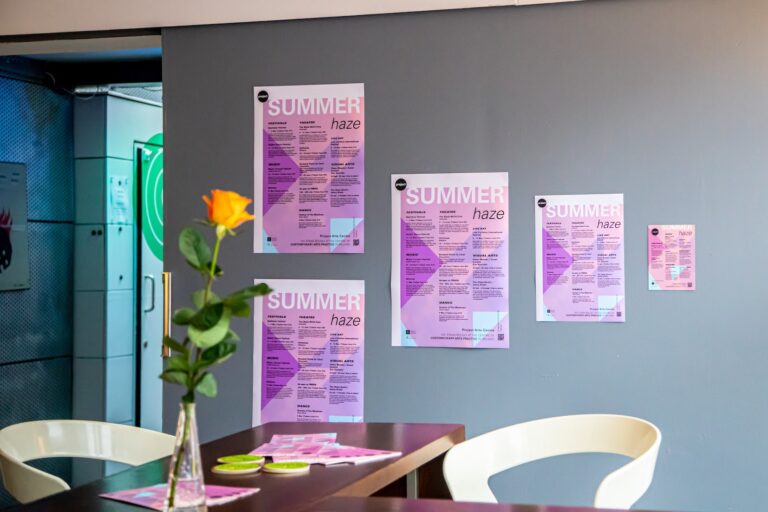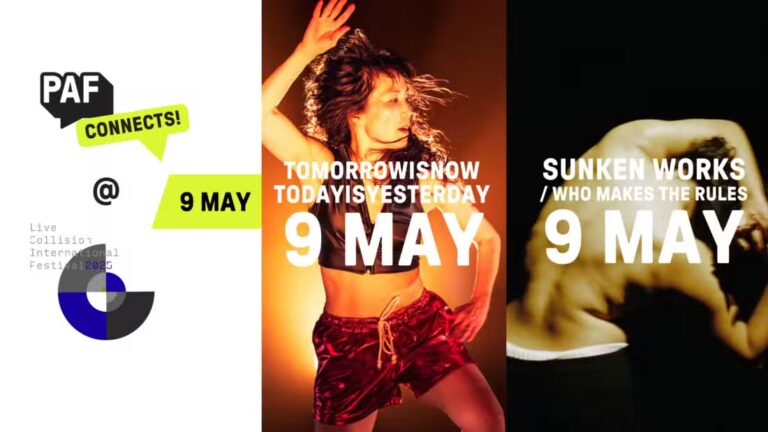Project Artist and choreographer Fearghus Ó Conchúir has been invited to present his acclaimed dance work Cure at the Hong Kong Cultural Centre as part of the i-Dance Festival this month. Before he left, he sat down with David Mullane to discuss his work and the tour.

Let's start at the very beginning. You come from Ring, part of the Gaeltacht na nDéise in County Waterford. Do you identify as an artist from there and do you think your childhood home has informed and influenced your dance?
Yes, I do. I think that the kind of life we’ve lived informs our bodies and so what I’m able to do with my body is informed by my background. I did a piece a few years ago called Match which was a duet for two men that was performed in Croke Park. My family are GAA mad, they’re all from Cork, all Cork supporters and I think that the DNA of my body was probably made for GAA but I’ve kind of converted it into other uses. But it’s still related to that and I think the kind of physicality in my work is quite strong and effortful. I’m not the most refined of dancers because I started late but I think there’s a sort of quality that comes from that; there are certain things I can say with my body that maybe a different kind of refined dancer doesn’t communicate in the same way. I did a residency when I was in Ballyvourney (a Gaeltacht in Cork) and the locals hadn’t really seen a lot of contemporary dance before but the thing they really identified was like “Oh god, we wish you were on the team, you’d be a great asset to the team” and for me that’s great. There’s a lot of people that don’t know what contemporary dance is but they can look at a body moving and they can recognise something in that. For me, that’s the important thing about the dancing. It isn’t that there’s a secret code that people have to know about to crack. We all know how to read bodies, that’s what we’ve evolved to do so I’m really happy if people feel something when watching my work rather than tease out a puzzle.
You read literature at Oxford. How did you move into the world of dance?
At university, I was doing a lot of drama and somehow I ended up performing a lot of the physical roles, like Johnny in Juno and the Paycock, who's missing an arm, which changes his physicality. Also at Oxford, it was a lot about people (who are quite famous now) standing and speaking beautifully so there wasn’t much about physicality and that was the part that I was drawn to. Eventually, I ended up dancing in a musical. It was a version of The Jungle Book but mixed with West Side Story set in a Northern Irish context, directed by Mick Gordon. It didn't transfer to the West End but we did learn our craft there. I also did a lot of dance classes so then I fell in love with the dance. When I was doing my masters at Oxford, I would actually spend three days a week in London just taking dance classes and then when I finished my masters I knew I wanted to train, even though I was 23 at that point, which is quite late for a dancer but fortunately for men there are more opportunities if you start late; it’s not as competitive as it is for women.

And now you've returned to college to do a PhD?
Yeah, I haven’t been in academia now for over twenty years but recently I’ve been thinking about different ways to challenge myself. One of the reasons that I’m an artist is to keep challenging myself. I remember doing a dance workshop and this dancer from a well known company was saying that every day the dancer wakes up in a different body so there’s a challenge every day to try and do the things you were going to do, the things you said you’d do yesterday but with this new body. I like that challenge because I was getting a little bit bored so now twenty years later, I'm back in academia but I’m not studying literature, I’m studying in the geography department at Maynooth. It’s a new discipline so even though I’m focusing on dance in Ireland and the role of the choreographer as citizen, I’m doing it because I wanted to learn something new. I think it’s important to keep challenging yourself, to learn new things, and hopefully it’s a way to feed the knowledge that I’ve gained as an artist into academia but also to learn from academia so that it will help not only me but also other people in the dance sector.
You've spoken before about the concept of 'smear' and your interest in Francis Bacon. Do you often find yourself being inspired by other artists and art forms, implicitly or explicitly?
Yeah, I collaborate widely with other artists, particularly musicians but also visual artists. In the past, I guess literature a little bit too. There isn’t a lot of text in my work but I would definitely say that a lot of my early work was definitely influenced by Beckett because I think Beckett is a great choreographer; it’s a very minimalist choreography but it’s a very clear vision of how the body should be moving on stage, or not moving. It’s very interesting that Irish actress Lisa Dwan is doing a one-woman Beckett trilogy around the world at the moment (Not I, Footfalls, Rockaby) because she trained as a dancer. I think she brings that to the role. But yeah I do, I think I’m always looking. I look out the window at Dance House where we’re rehearsing and when I was doing Tabernacle, which is a piece about religion, I would see the people that were kneeling and praying to the Virgin Mary statue that’s in the park next door, and when making Niche, which is about finding your place in the city, I would see junkies and people who are drunk. I think as an artist you are trying to be open to influences all the time. The good thing about engaging with artists, especially fantastic ones like Bacon, is that they’ve been open to influences as well so when you go to them the work's already a bit processed, “He’s done some of the work, I’ll build on that.” But there’s something in the Bacon, it’s really about how muscular and visceral the painting is and how I imagine the energy in his body as he’s painting it; you really see his smearing of paint on the canvas and taking it off.

Living in London now, do you see yourself as more Anglo-Irish than Irish?
No, not at all. I’m really clear – I’m Irish and I live in London, which is different to being Irish and living in England. Living in London is like living in a cosmopolitan otherworld and there’s a long tradition of Irish artists going away to write about Ireland. In a way, my living in London has made it easier for me to work across Ireland. There’s a danger when you live in Dublin that you only work in Dublin or else you’re sort of a not-in-Dublin artist. Because I live in London, I can fly just as easily to Farranfore or Cork as I can to Dublin so sometimes I can do projects in the school where I grew up in Ring or I can be in Project Arts Centre. I think for me that living in London has made that possible rather than living anywhere particular in Ireland, planting your flag somewhere in Ireland.
Talking of making things possible, do you find yourself having to supplement or complement your dance work with teaching or other forms of work? What is it like to work as a dancer today?
I do. I think about everything I do as choreography and the other things I do would only be possible because I spend time in the studio but I do a number of other things. I am part of a team that gives cultural leadership training, the Clore Leadership Programme in the UK, which occupies me for probably six or seven weeks in the year and that’s what brings me to Hong Kong and around the UK. It’s a kind of facilitation but my job, as well as talking sometimes, is helping those groups, for each of those individuals to be fantastic in a group and that’s what I do when I work in a studio. I don’t tell people what to do, it’s not me telling them steps, it’s about making the right conditions for everyone to contribute well so what I do in that environment really comes from the studio. I earn money there that helps because I’m not in the studio all the time and I don’t teach so much. I used to in the past but I don’t now because I realised that a really good teacher gets energy from teaching and I actually I get my energy from creating and then I can give out some of that energy when I’m teaching, but creating is the thing that I need to be doing.

Will this performance of Cure at the i-Dance Festival be your first time performing in Hong Kong?
Actually, no, it won't be. In 2007, I was part of the Dadao Live Art Festival, a very underground live art festival where I did a solo piece, alongside a lot of live artists who were not so happy to have a choreographer there. I visited a lot of different cities around China and we went to Hong Kong, which was my first time there but it was kind of weird - I didn't really get a sense of the city when I was there. Then I visited twice again, four and two years ago, with the Clore Leadership Programme. That last trip, I also showed two of my dance films at a dance film festival. Returning this time with Cure, it's a big opportunity for me to build on a lot of the relationships I've made over the years, and it's a good show which I'm really happy with so it really is great to be coming back.
How do you anticipate a Hong Kong audience will receive the work?
I think it's going to be interesting because when I was making Cure it was definitely within a certain Irish context of recovery. Even though the work doesn't address it specifically, it is related to economic recovery and also moral recovery, both of the Catholic Church and the political class. I've performed the work in Europe where I think there was a similar sense of crash and what happens next. Hong Kong hasn't really had that crash but now it's experiencing its own political crisis so I expect there to be some connection around freedom of expression. I'm just speculating but I think an aspect of that will come to the fore in Hong Kong whereas that freedom of expression is taken for granted when I perform the work here in Ireland. One of the reasons I don't tour a lot is that I don't like doing one-night stands because I like to spend time with an audience, get to know and engage with them. It's not that I change the work but I can let it evolve to respond to whatever the local context is and I think the week I spend in Hong Kong will be really interesting.

You are one of Project Arts Centre's Project Artists. What does it mean for you to be involved with Project in this way?
It’s been invaluable to me because I’ve never had a separate producer - you don’t really have that in dance, there’s not that separate producing role - and so to survive as an individual artist without a company structure it’s only been possible with Project’s support. That’s very practical and structural on one level. Project is a company so it’s able to employ the dancers that I work with so there’s guarantees for them which are important but there’s other practical help about putting together the teams. The Project staff have a knowledge. Over the years, there’s been more awareness of my work and needs so people actually want to help and give advice. I think it’s also the idea of having a home, a base; when you’re an independent artist that travels as much as I do, it’s great that you can feel like there’s a place where people know you and they recognise your work and they have your back and that’s really important. I think I was definitely there at the beginning along with some other artists like Brokentalkers so I’ve seen many iterations and I look forward to seeing how that evolves and knowing that there are new opportunities ahead.






